Transitioning from Summer to Winter Crops UK: Complete Gardener's Guide
Learn how to successfully transition your UK vegetable garden from summer to winter crops. Discover the best varieties to grow, optimal sowing times, and essential protection methods for continuous harvests throughout the colder months.
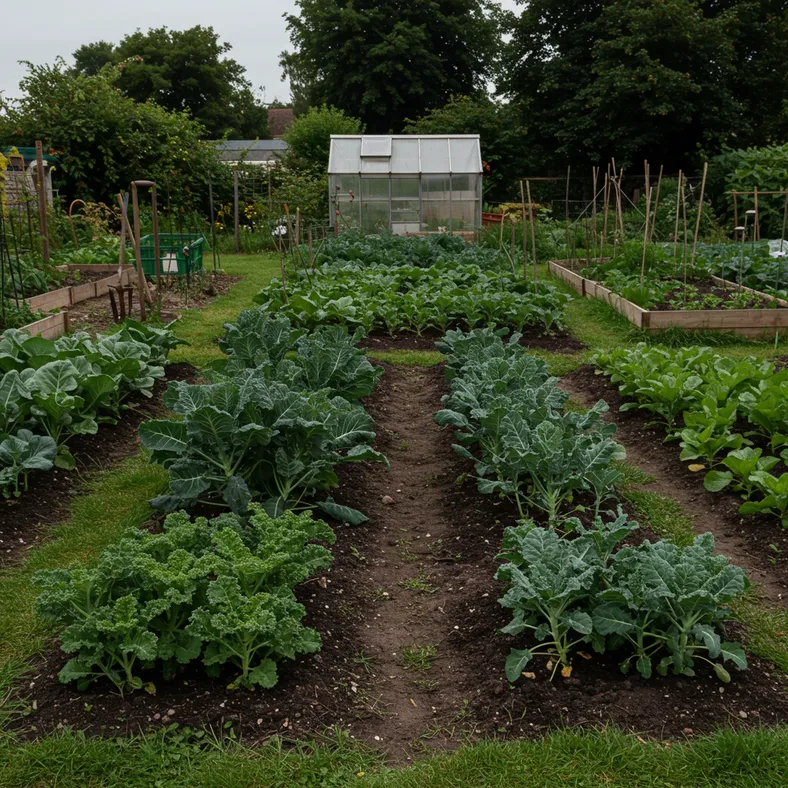
- Understanding the UK Winter Growing Season
- Essential Summer to Winter Transition Timeline
- Preparing Garden Beds for Winter Crops
- Hardy Winter Vegetables for UK Climate
- Sowing Techniques for Autumn Plantings
- Protecting Crops Through Winter
- Succession Planting for Continuous Harvests
- Harvesting and Storage Strategies
- Common Challenges and Solutions
- Planning Next Year's Transitions
The transition from summer to winter crops is one of the most crucial periods in the UK gardening calendar. As summer vegetables reach their peak and begin to wind down, forward-thinking gardeners are already planning and planting their winter harvests. This transitional period, primarily occurring between July and September, requires careful timing, proper planning, and understanding of UK climate patterns to ensure a productive winter garden that will sustain you through the colder months and into the following spring's 'hungry gap'.
Understanding the UK Winter Growing Season
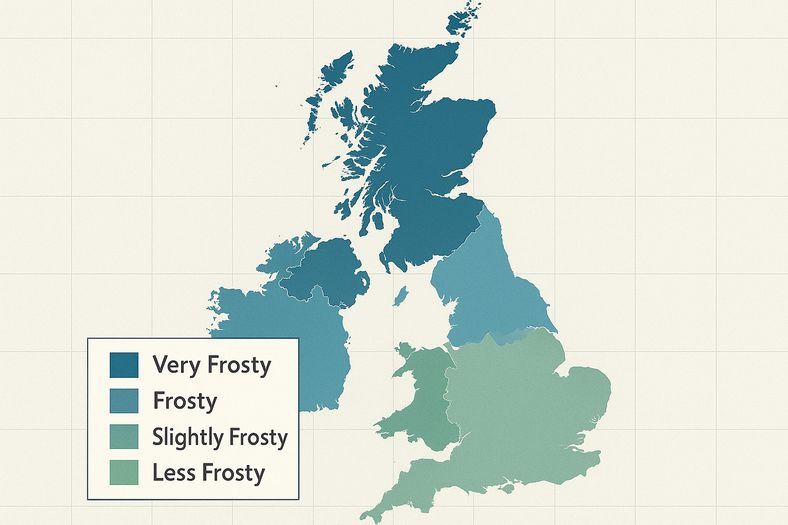
The UK's temperate maritime climate provides unique opportunities for winter vegetable growing that many gardeners don't fully exploit. Understanding your local climate zone and frost dates is essential for successful crop transitions. Most of the UK experiences first frosts between October and November, with temperatures rarely dropping below -10°C for extended periods.
Winter crops in the UK can be categorised into three main groups: fully hardy vegetables that withstand temperatures down to -15°C (such as Brussels sprouts, leeks, and parsnips), semi-hardy crops that tolerate light frosts with protection (like winter lettuce and spinach), and stored crops harvested in autumn for winter consumption (including winter squash, onions, and root vegetables).
The key to successful winter growing lies in understanding that growth essentially stops when temperatures consistently fall below 5°C. This means your crops need to reach near-maturity before the deep winter sets in, making timing absolutely critical.
Essential Summer to Winter Transition Timeline
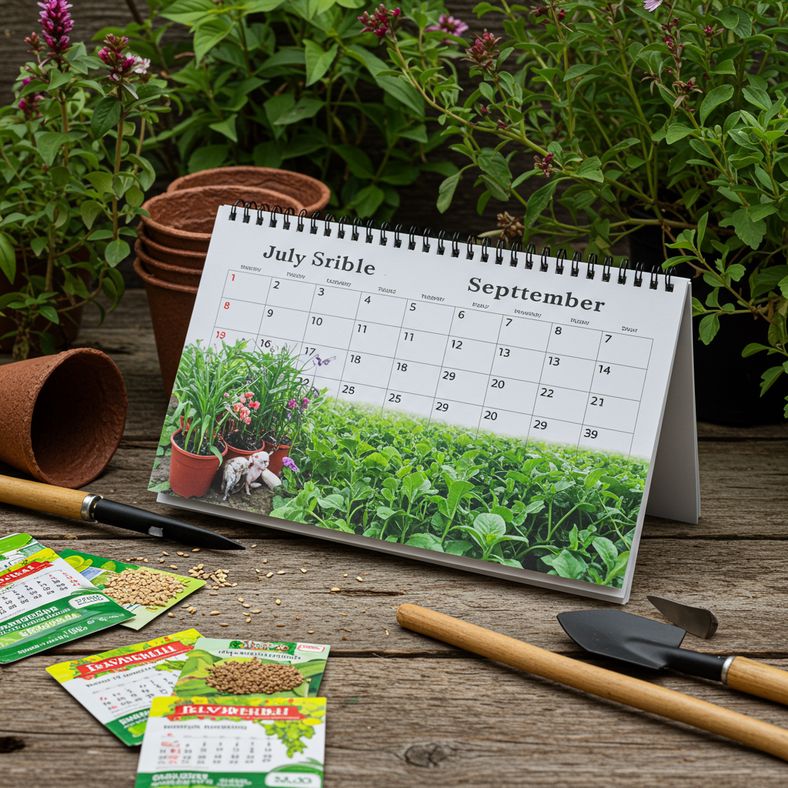
Successful winter crop production requires precise timing that begins in midsummer. July is the ideal time to sow Brussels sprouts, winter cabbages, and sprouting broccoli for harvesting from December onwards. These brassicas need the longest growing period and benefit from establishing before autumn weather arrives.
August marks the peak sowing period for most winter vegetables. This is when you should plant winter leeks, kale varieties, and winter cauliflower. Late summer sowings of root vegetables like carrots and turnips will provide fresh harvests well into winter when stored correctly.
September represents your final opportunity for quick-maturing winter crops. Focus on fast-growing salads, winter radishes, and oriental vegetables like pak choi and mizuna. These crops can establish before growth slows and provide fresh leaves throughout the milder winter periods.
The Garden Cabbage Savoy Vertus Seeds are particularly excellent for August sowings, as this hardy variety withstands harsh winter conditions while providing sweet, flavourful leaves from December through March.
Preparing Garden Beds for Winter Crops
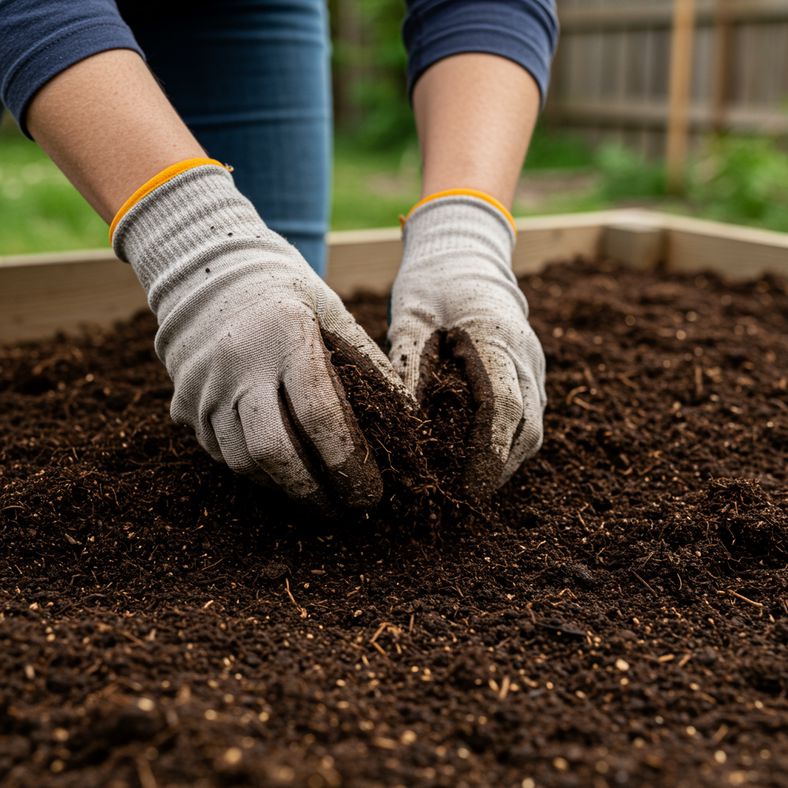
Successful transition begins with proper soil preparation. As summer crops finish, resist the urge to completely clear beds immediately. Instead, harvest gradually and prepare areas in sections, allowing for succession planting and continuous production.
Remove spent summer plants and any diseased material, but leave healthy root systems to decompose naturally. Add a 2-3cm layer of well-rotted compost or manure to feed the soil organisms and improve structure for winter crops. Unlike spring preparation, avoid heavy digging which can damage soil structure before winter.
For areas destined for brassicas, check soil pH as these crops prefer slightly alkaline conditions (pH 6.5-7.5). If your soil is acidic, apply garden lime in early autumn, but never at the same time as fresh manure. The ideal approach is to lime in September and add organic matter in October.
Consider installing permanent infrastructure like crop protection hoops during the preparation phase. Installing supports for fleece or netting before planting makes winter protection much easier and less disruptive to established plants.
Hardy Winter Vegetables for UK Climate
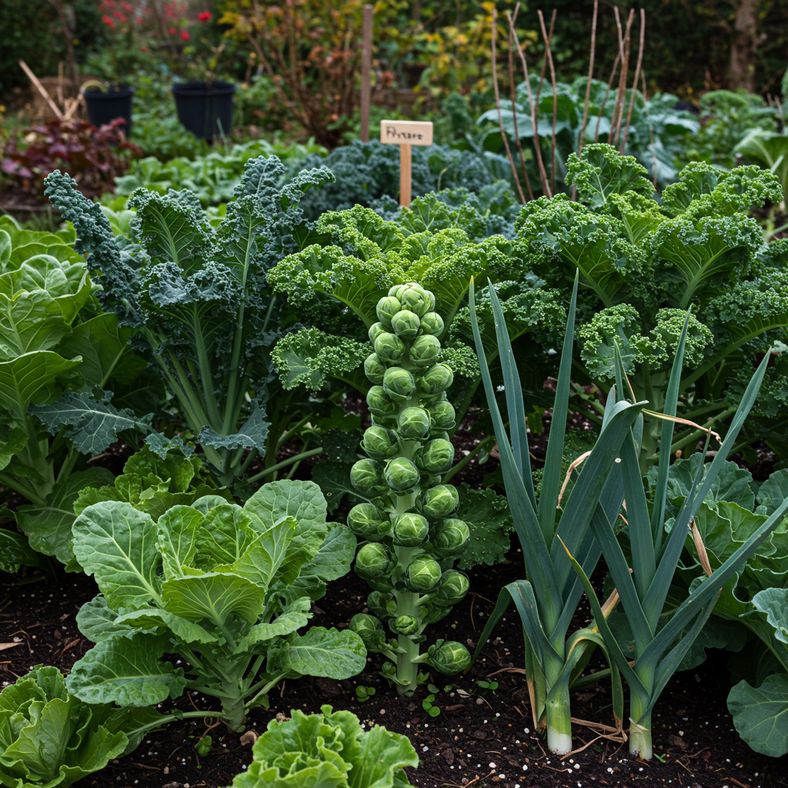
The backbone of UK winter vegetable growing consists of hardy brassicas that actually improve in flavour after exposure to frost. Brussels sprouts, winter cabbages, kale, and sprouting broccoli form the foundation of the winter garden, providing reliable harvests from December through March.
Root vegetables offer excellent storage potential and can remain in the ground throughout winter in most UK regions. Parsnips become sweeter after frost exposure, while winter carrots develop exceptional flavour when grown specifically for cold-season harvest. Leeks are perhaps the most reliable winter crop, withstanding even severe weather while providing fresh harvests.
For continuous fresh greens, focus on cold-hardy salad crops like winter lettuce varieties, corn salad (lamb's lettuce), and oriental brassicas such as mizuna and mibuna. These crops can be succession planted through early autumn for harvests well into winter with minimal protection.
The Kale - Nero DI Toscana - Black Tuscan variety is exceptional for UK winters, producing tender, dark leaves that become sweeter after frost while maintaining excellent texture throughout the coldest months. Similarly, Swiss Chard 'White Silver' Seeds provide colorful stems and nutritious leaves that continue producing even under snow cover.
Sowing Techniques for Autumn Plantings
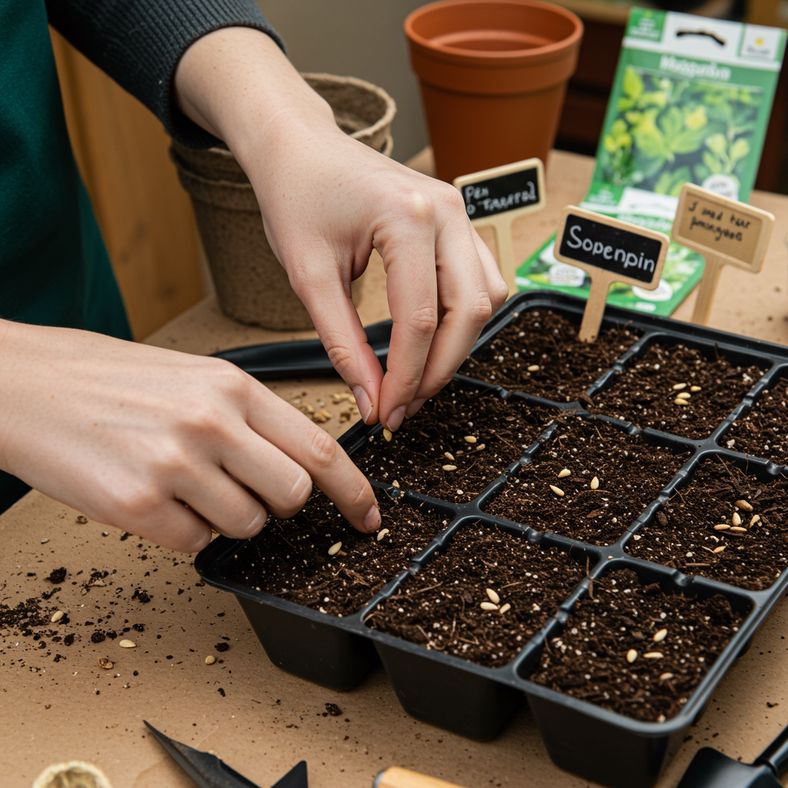
Autumn sowing requires modified techniques compared to spring planting due to changing light levels and temperatures. Direct sowing works well for hardy crops like broad beans, onion sets, and garlic, but many vegetables benefit from starting in modules or seed trays for better germination control.
When direct sowing in late summer, soil moisture management becomes critical. Water drill bottoms before sowing, then cover seeds with dry soil to prevent surface crusting. This technique, known as 'water-then-sow,' provides essential moisture for germination while maintaining good surface conditions.
For module sowing, use a 50:50 mix of multipurpose compost and vermiculite to improve drainage during the wetter autumn period. Sow 2-3 seeds per module for crops like lettuce and brassicas, thinning to the strongest seedling after germination. This approach ensures you have backup plants and maximises transplant success.
Temperature management in seed trays becomes increasingly important as outdoor temperatures drop. A heated propagator or warm windowsill can significantly improve germination rates for later sowings. However, remember that autumn-sown plants must be hardened off gradually before transplanting to prevent shock.
Protecting Crops Through Winter
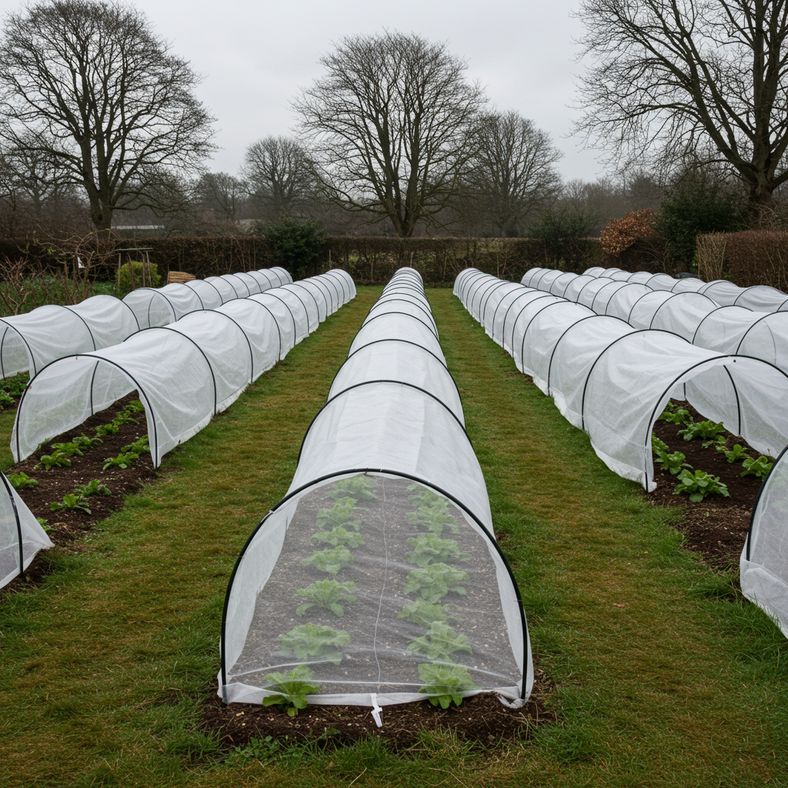
Even hardy winter crops benefit from protection during the harshest weather. The goal isn't necessarily to keep plants warm, but to protect them from desiccating winds, prevent soil freezing around roots, and maintain manageable harvesting conditions.
Fleece provides excellent protection for semi-hardy crops like winter lettuce and spinach beet. Use horticultural fleece rather than garden fabric, as it allows better light penetration while providing 2-4°C of frost protection. Support fleece with hoops to prevent direct contact with plants, which can cause frost damage.
For hardier crops like kale and Brussels sprouts, wind protection often proves more valuable than frost protection. Temporary windbreaks using garden mesh or even old bedsheets can prevent leaf shredding and plant stress during severe weather. Position windbreaks on the windward side of crops, typically north and east-facing exposure in most UK locations.
Mulching around plants with straw, bracken, or shredded leaves provides root protection and makes harvesting easier during frozen conditions. Apply mulch after the first hard frosts when plant growth has essentially stopped for the season.
Succession Planting for Continuous Harvests

Succession planting remains important for winter crops, though the principles differ from summer growing. Rather than continuous weekly sowings, focus on strategic plantings at 2-3 week intervals through late summer and early autumn to ensure steady harvests.
For salad crops, start with heat-tolerant varieties in July and August, transitioning to cold-hardy types for September and October sowings. This approach provides fresh leaves throughout the transition period and into winter. Winter lettuce varieties like 'Arctic King' and 'Winter Density' are specifically bred for low-light, cold conditions.
Root vegetables benefit from succession planting for harvest timing rather than continuous production. Sow carrots every three weeks from July through September to provide fresh roots from October through February. Late sowings remain small but tender, perfect for winter salads and garnishes.
The Carrot Autumn King Fresh Vegetable Seeds are particularly well-suited for late-season sowings, producing excellent storage carrots that maintain quality throughout winter when properly harvested and stored.
Harvesting and Storage Strategies

Winter harvesting requires different strategies than summer gathering. Many crops improve with frost exposure, so timing harvests after cold snaps often yields better-flavoured vegetables. Brussels sprouts, parsnips, and kale all develop enhanced sweetness following frost.
For crops remaining in the ground through winter, harvest during milder periods when soil isn't frozen solid. Keep harvesting tools clean and sharp, as damaged plants are more susceptible to winter diseases. The JiveSnip Premium Titanium Garden Secateurs maintain their sharpness in cold conditions and resist corrosion during wet winter weather.
Root vegetables for storage should be harvested before hard freezes damage their texture. Carrots, turnips, and beetroot can be stored in slightly damp sand in cool, dark conditions. Remove all foliage before storage but avoid washing, as this can introduce bacteria that cause rot.
Leafy crops are best harvested as needed, taking outer leaves while allowing centres to continue growing. This cut-and-come-again approach extends harvest periods and maximises yields from single sowings.
Common Challenges and Solutions
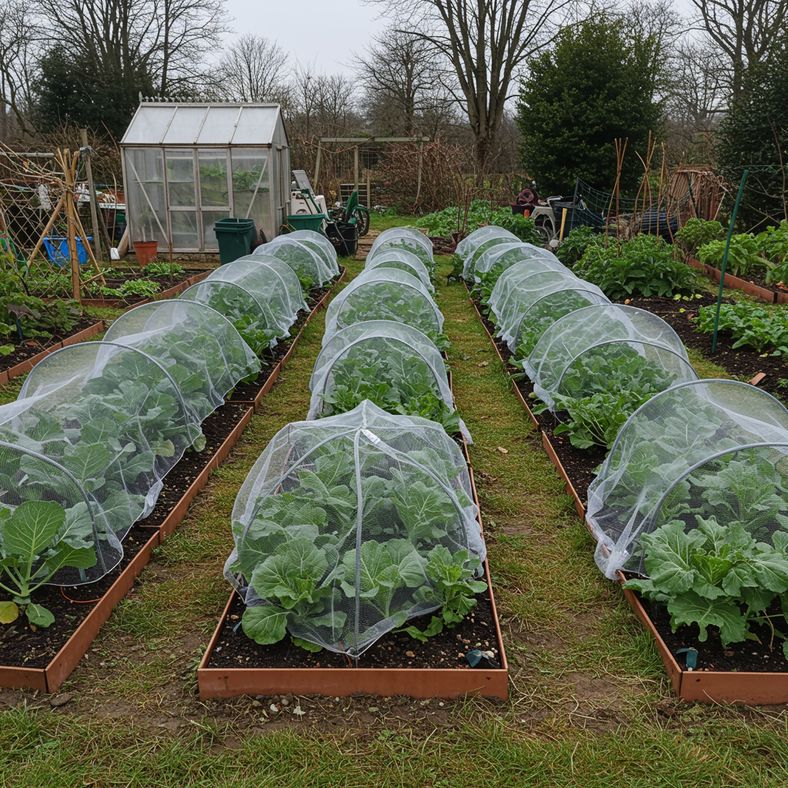
Winter growing presents unique challenges that require proactive management. Pest pressure shifts from summer insects to winter problems like pigeons, rabbits, and slugs that remain active during milder periods. Netting provides effective protection against birds, while copper barriers and organic slug pellets control gastropod damage.
Fungal diseases become more problematic in winter's high humidity and low light conditions. Ensure good air circulation around plants by proper spacing and remove any yellowing or damaged leaves promptly. Avoid overhead watering during cold periods, as wet foliage combined with low temperatures promotes disease development.
Soil compaction from winter rain and foot traffic can damage plant roots and impede drainage. Use boards or permanent paths to distribute weight when accessing crops during wet periods. Consider raised beds for areas with heavy clay soil that becomes waterlogged in winter.
Growth essentially stops when temperatures consistently remain below 5°C, so don't expect summer-like growth rates. This dormancy period is normal and allows plants to concentrate energy on survival rather than rapid development. Resume feeding and more active management as temperatures rise in late winter.
Planning Next Year's Transitions
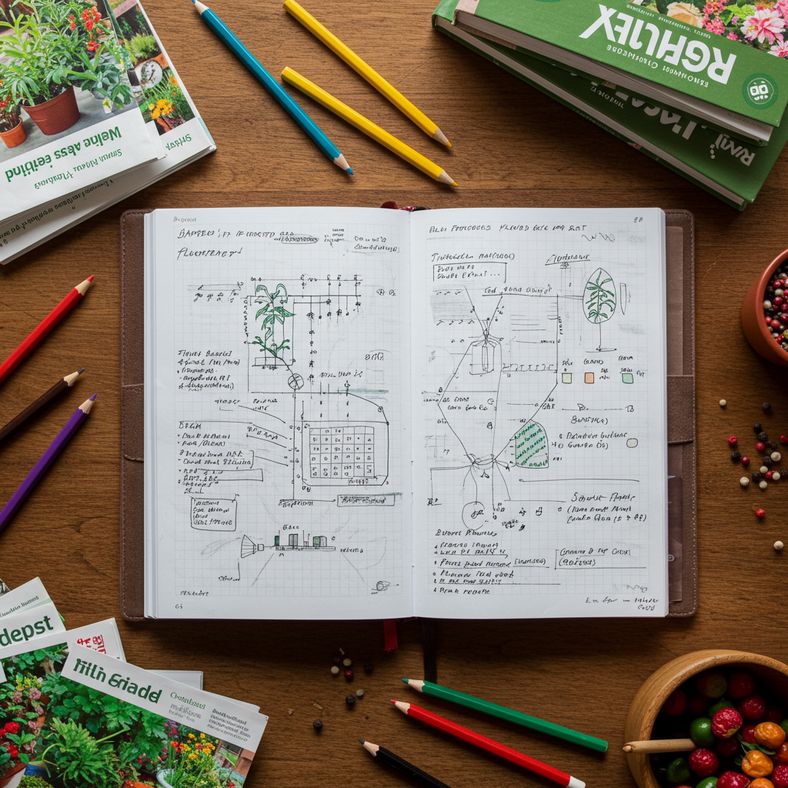
Use the current winter growing season to plan improvements for next year's transition. Keep detailed records of sowing dates, varieties grown, and harvest periods to refine timing for your specific location and microclimate. Note which protection methods worked best and which crops exceeded expectations.
Consider expanding cold frames or investing in a polytunnel to extend the growing season and improve success rates with tender crops. These structures create beneficial microclimates that can advance harvests by several weeks and provide better germination conditions for late sowings.
Plan crop rotation for next year while current crops are still in the ground. Winter brassicas should be followed by legumes or roots to prevent soil depletion and disease buildup. Mark areas that performed well and those that struggled to inform future planting decisions.
Order seeds for next year's winter crops early, as many specialist varieties sell out quickly. Focus on varieties specifically bred for winter growing rather than attempting to extend summer varieties beyond their optimal season.
Disclaimer: This article contains Amazon affiliate links. We may earn a small commission from qualifying purchases at no additional cost to you.